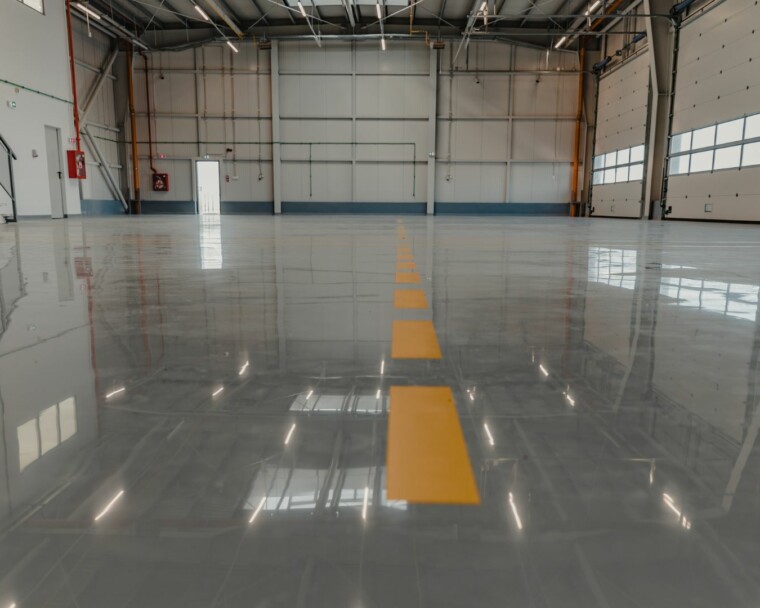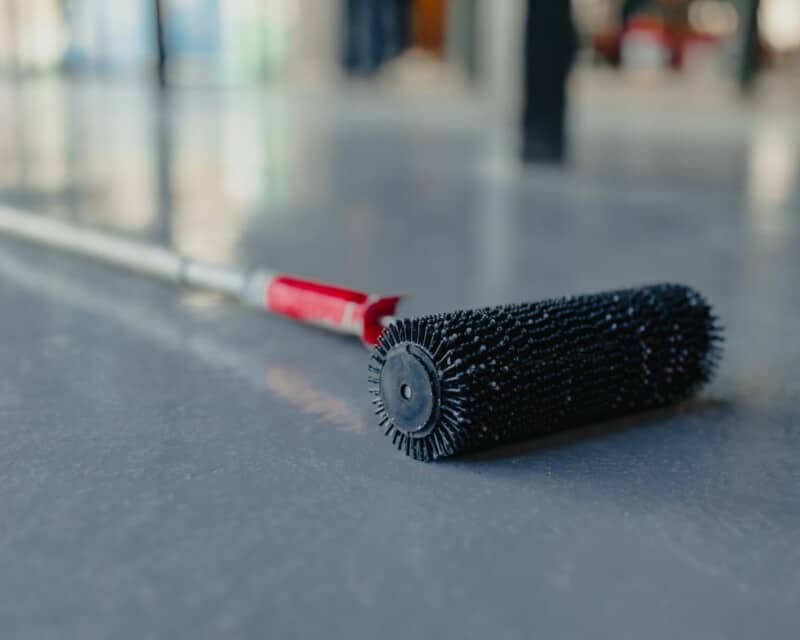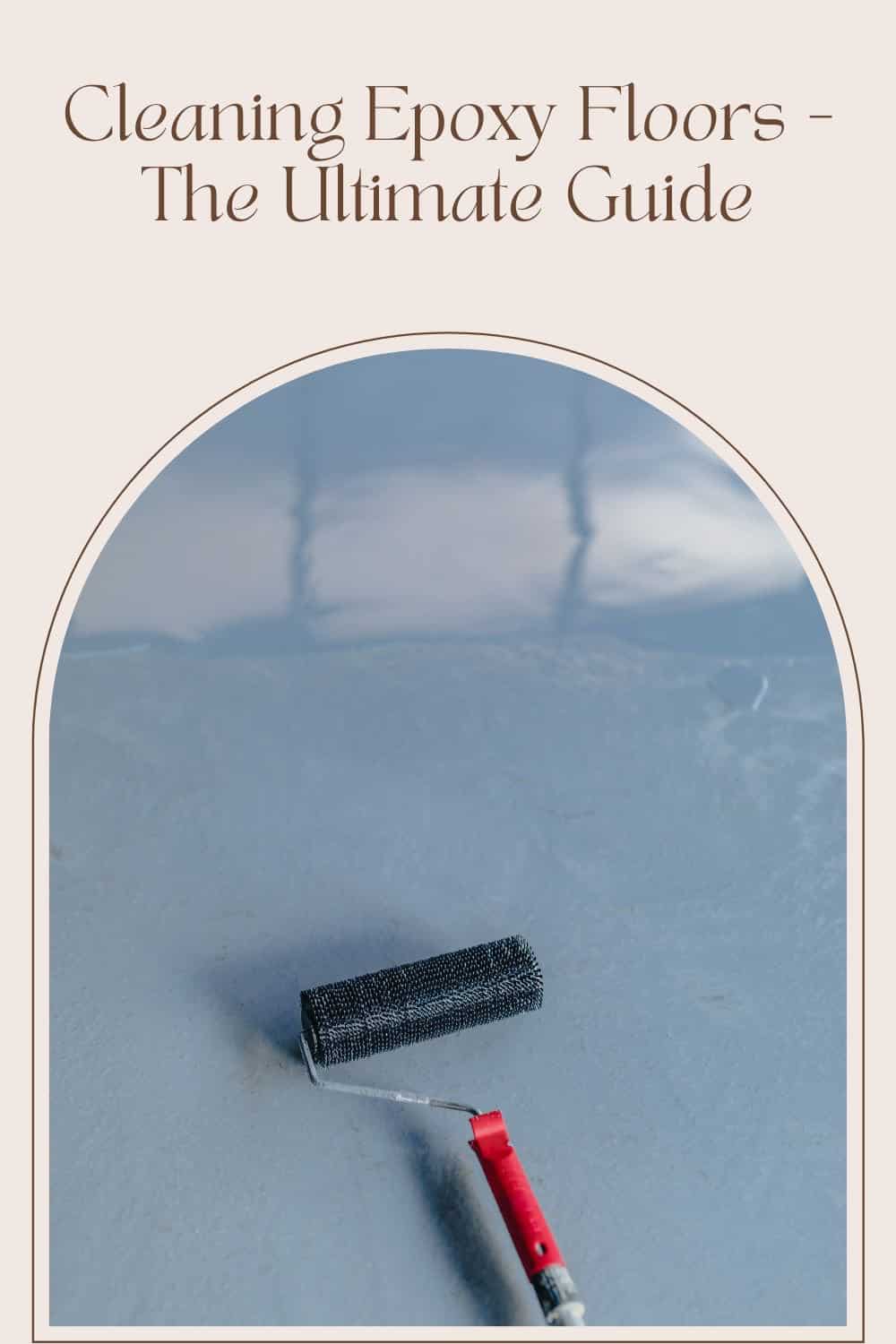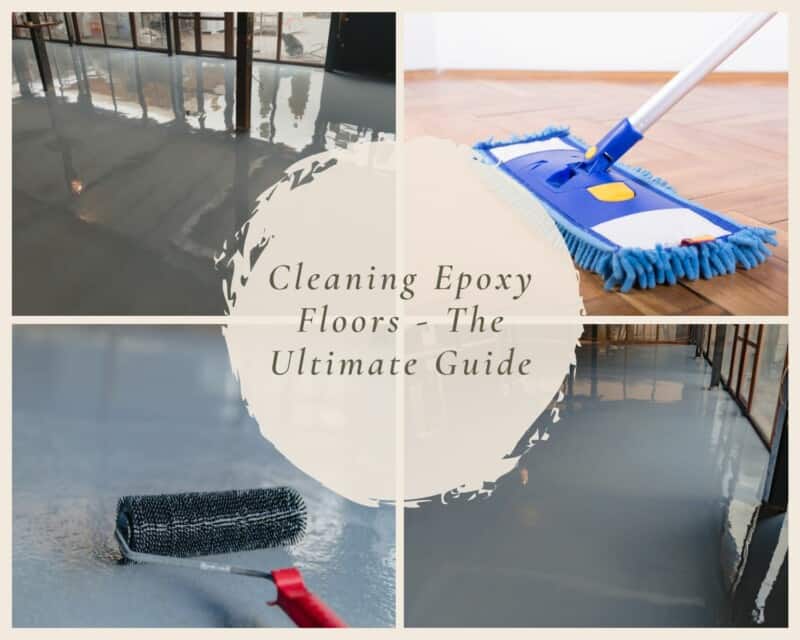Epoxy flooring is easily one of the most unique forms of flooring out there and while it’s mostly used in hospitals, schools, etc, it has also found a place in people’s homes. Especially since it’s started to gain popularity.
But because it is so unique and there isn’t exactly an excess of care information for the average epoxy floor owner, it’s often confusing to figure out how to take care of it. And more specifically, you might not know how to keep it clean.
Luckily, today’s guide will tell you everything you need to know about cleaning epoxy flooring.
Tips For Cleaning Epoxy Flooring
There are several different methods you can use to keep your epoxy flooring clean, all of which we’ll be getting into. But first, here is a quick rundown of things to know about upkeeping epoxy floors.
- Epoxy flooring is fairly easy to clean and traditional methods like sweeping, mopping, and vacuuming are perfectly acceptable.
- Plus, there are cleaners that are safe to use with epoxy floors if you feel the need to sterilize them.
- But there are some types of cleaners that could damage epoxy floors, so you’ll need to steer clear of those.
- And while all of this might make stain removal for these floors seem a bit scary, there are safe ways to remove stains from epoxy flooring.

How To Sweep, Mop, And Vacuum Epoxy Flooring
It’s typically suggested that you sweep your epoxy flooring about twice a week, or more often if a lot of dirt and debris accumulate on it. Not only will this keep your epoxy flooring looking nice, but too much grit building up on epoxy can actually damage it in the long term by embedding in the floor or scratching it.
Pro Tip: Use a broom with soft bristles to avoid scratching the floor.
You can also mop your epoxy floor if you want to restore its shine. Simply using warm water and a mop made of synthetic fabric should be enough to clean the floor. Rayon is a popular choice for mops.
If you do decide to use a mop made of natural fibers to clean the floor, then you should be aware that small bits of it may get stuck on the surface.
As for vacuuming, just vacuum the floor as you usually would. But keep in mind that shop vacuums are the most effective choice, and you should always use a soft brush attachment in order to avoid scratching the surface.
Between sweeping, mopping, and vacuuming, simply choose the one that you prefer doing and have the supplies for. The only important thing is that you’re regularly getting rid of the grime that builds up on your floor.

Cleaners You Can Use To Sterilize Your Epoxy Flooring
Sometimes you don’t just want to make your floor shine or appear clean though, sometimes you feel the need to actually sterilize the floor and many people don’t feel water adequately does that job. But rest assured that there are cleaners you can use on your epoxy flooring when the situation arises.
- Firstly, contrary to what you may see online, you can actually use certain types of dish soap on epoxy floors if that’s a type of cleaner that you prefer. Just be aware that dish soap has been known to leave a haze on epoxy floors over time, which isn’t damaging but doesn’t look the best. One way around this is to make sure you rinse the floor thoroughly after you clean it with the soap.
- One of the most highly suggested cleaners for epoxy flooring is ammonia. The ratio should be about half a cup of ammonia per gallon of hot water.
- Another popular option is the cleaner, Simple Green. It will need to be diluted though, or you’ll have a haze just like with the dish soap. Half a cup of Simple Green per gallon of water should suffice.
- And some people actually use Windex for cleaning their epoxy floors. Yet again, you’ll want to dilute it. One part Windex and three parts water is your target ratio.
Cleaners You Should Never Use On Epoxy Flooring
Just as there are cleaners that are safe to use on epoxy floors, there are also cleaners that you should never use! So let’s take a quick look at which products you should avoid.
- Acid based cleaners are a complete no go for epoxy floors since they could actually remove the gloss from your flooring. Examples of acid based cleaners would be vinegar or citrus-based cleaners.
- You’ll also want to stay away from abrasive cleaners, examples are the brands Ajax and Comet.
How To Remove Stains From Epoxy Flooring
When it comes to removing stains from flooring, it can be quite difficult and require harsh cleaning solutions. And if you’ve just read the section on which cleaners you should never use on your epoxy floor, then you may be wondering how you can remove stubborn stains.
Luckily, you should be able to use either the ammonia or Simple Green cleaning solutions which were mentioned earlier to remove the stains.
- Clean the stain with your chosen solution.
- Then scrub the floor with something, a stuff nylon brush should do the trick.
- Repeat until the stain has been removed.
- And make sure to rinse and dry the area afterwards.
Conclusion
Compared to some other types of flooring, epoxy floors are actually quite easy to maintain and keep clean. They’re not overly sensitive, and as long as you avoid acidic or abrasive cleaners you should be fine.
Water is your best friend, since it will restore the shine of your floors without disrupting the glossy finish. Just make sure to complete your cleaning regularly to avoid damage to your floors in the long run.




